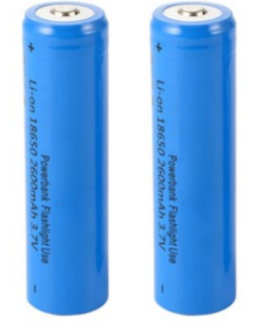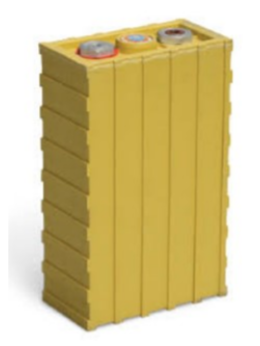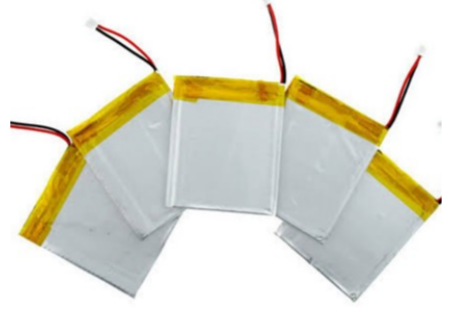Welcome to the latest edition of Survey Matters e-Newsletter. Survey Matters brings you the latest news and information for accredited surveyors in Australia.
We welcome your feedback and input into this newsletter. In particular, let us know if you would like to know more about a particular topic or if you encounter issues out in the field that need clarification.
You can do this by sending an email to dcvsurvey@amsa.gov.au
Since the last edition
As mentioned in the last edition of Survey Matters, a comprehensive review of NSCV C5B - Electrical has been completed. The revised standard (edition 3) commenced on January 1 and is available on the AMSA website here.
AMSA have visited yards in Cairns and Fremantle to talk to boat builders with the aim to improve understanding of DCV requirements at the source.
In this edition
- Communication matters
- Survey forms update
- Surveyor accreditation renewal audits
- Reporting deficiencies ‘as soon as practicable’
- EX40 stability documentation
- CE certification to Recreational Craft Directive 2013/53/EU
- Lithium batteries and the associated hazards
Communication matters
We have received feedback from our customers requesting that AMSA provides more regular updates on the progress of their application. As a result, AMSA will now be addressing correspondence relating to applications to applicants and copying in accredited surveyors.
This will help to ensure AMSA, the applicant and accredited surveyors are all kept up to date with the status of applications
Survey forms update
The following updates have been made to survey forms:
- The combined survey form spreadsheet has been updated to include forms for periodic survey;
- The lightship form (AMSA 653) is being updated to include an area to include results from a lightship derivation and comparison with previous results;
- The initial fire safety report (AMSA 575) has had some minor changes made in wording and formatting.
All forms can be accessed from the AMSA website.
Please keep providing feedback on the forms so we can continue to improve them.
Surveyor accreditation renewal audits
2020 will see the start of accredited marine surveyor accreditation renewals.
The Surveyor Accreditation Guidance Manual (SAGM) Part 1 Chapter 7 contains the requirements that are to be complied with for renewal of accreditation.
Part 1 7.1 (3) states:
(3) In accordance with section 28 of the National Law Regulation, the National Regulator will renew an Accredited Marine Surveyor’s accreditation if satisfied that:
(a) they have maintained their professional competence in the category, or categories of surveying in which they are accredited; and
(b) Their work has been found to be satisfactory during any audits; and
(c) The prescribed fee for renewal has been paid.
AMSA conducts assessments (a form of audit) of applications, survey activities and recommendations on a day to day basis and part of the renewal of the accreditation will undertake an expanded desktop audit of the work undertaken by the surveyor in the last 5 years.
The scope and depth of the audit will be based on the type and number of surveys undertaken by the surveyor and the results of assessments of applications undertaken by AMSA.
As part of the audit process, AMSA will contact the AMS prior to conducting the audit to request all information retained by the surveyor in relation to the identified survey activities is supplied to AMSA. This information includes all reports, checklists, photos, videos, notes and third party reports that were created or used in support of the recommendation made by the surveyor.
In accordance with SAGM Part 2 clauses 2.9.2, 3.9.2 (2), 3.10.2 (2), 3.11.2 (2), 4.11, 7.4 there is an expectation that the survey process will generate more documentation than the minimum reports provided to AMSA (specified in SAGM Part 2 Annex 1), which would be retained by the AMS. It is these records that are requested to be supplied as part of the audit process.
The desktop audit will be conducted against the requirements of the National Law, Marine Orders, National Law Exemptions, SAGM, NSCV and Instructions to Surveyors. The audit may result in findings. Findings will be categorised as non-conformances or observations. non-conformances are findings whereby a specified requirement in the National Law, Marine Orders, National Law Exemptions, NSCV, SAGM or Instructions to Surveyors have not been complied with or where insufficient evidence has been provided to demonstrate that the requirement has been complied with. Observations are statements of fact that are based on evidence gathered as part of the audit, and do not require a response from the accredited surveyor.
Once the audit is complete a report with the non-conformances and observations will be prepared and sent to the AMS. All Non-conformances must be addressed and corrective actions supplied to AMSA within the time frame specified on the audit report. Failure to address non-conformances or general poor performance from an audit may impact on a renewal application.
Reporting deficiencies ‘as soon as practicable’
In response to the article published in the last edition What does the term Periodic Survey (in or out of water) mean? we were asked what the definition of ‘as soon as practicable’ is under s 33 of the National Law Regulations and, hence, when a surveyor is required to notify AMSA of any deficiencies found on a vessel.
As soon as practicable is a standard that is used in a range of legislation and is not unique to the maritime regulatory framework. Australian courts generally consider that ‘as soon as practicable’ is a flexible timeframe which needs to be interpreted having regard to all the circumstances of the person on whom the obligation is placed and involves consideration of what would be feasible for the person to comply with the obligation in those circumstances.
As a practical example, where a surveyor has inspected a vessel in a remote location and had to travel a long distance to conduct the survey, and has not had the time or coverage to communicate a defect to AMSA following the inspection of the vessel, the expectation is that they would report the defect to AMSA when they were next in the office or had access to the necessary communications equipment.
Importantly, there is no discretion for a surveyor to allow vessel owners to fix defects prior to reporting them to AMSA. This is because the obligation for a surveyor to report is enlivened as soon as they become aware of the matter.
This means that surveyors shall notify AMSA of any deficiencies identified during a survey at the same time they provide the list of non-conformances to the vessel owner (or when they are next in the office or have access to the necessary equipment). Once the deficiencies have been rectified a recommendation shall be provided to AMSA.
EX40 stability documentation
Schedule 1, Division 2, clause 2.3 of Exemption 40 requires the surveyor to be satisfied that the vessel’s stability characteristics are fit for the purpose for which the vessel is intended.
AMSA requires evidence when assessing EX40 applications to show that the vessel has been assessed to an appropriate open water stability criteria. An ABP alone is not evidence that a vessel has open water stability. Documentation supporting a builder’s plate (calculations or test reports) is required in order to verify stability compliance.
Surveyors with category (b) accreditation and Recognised Organisations may demonstrate stability compliance via direct calculations, testing, or other suitable means as per chapter 7.5.4 (3) of SAGM Part 2.
CE certification to Recreational Craft Directive 2013/53/EU
The National Law - Marine Surveyors Accreditation Guidance Manual (SAGM) Part 2, Chapter 3, Clause 3.9.3 (2) specifies that, where a surveyor relies on CE Certification, the surveyor must ensure that a CE Declaration of Conformity has been issued for the vessel in accordance with the requirements of Directive 2013/53/EU (as amended from time to time).
Directive 2013/53/EU, published on 28 December 2013 replaced Directive 94/25/EC (as amended by Directive 2003/44/EC).
One of the objectives of the Directive’s revision was to update and modernise the essential requirements defined in the early 1990s that did not reflect the evolution of products in the boating industry.
The main changes in essential requirements are:
- New definitions of watercraft design categories
- Risk of falling overboard and means of reboarding
- Visibility from the main steering position
- Owners manual
- Buoyancy and flotation (introducing risk of inversion for multihull craft)
- Escape on habitable multihull craft in the event of inversion
- Outboard engines (emergency stopping device which can be linked to the helmsman)
- Electrical systems
- Prevention of sewage discharge (water treatment system for the toilet waste retention system)
- Lower limits for engine exhaust emissions
Many of the essential requirements contained in the Directive can be fulfilled by applying the relevant harmonised standards developed by the ISO Technical Committee 188 on Small Craft (EN ISO standards used in boatbuilding under the EU Directive 2013/53/EU).
Lithium batteries and the associated hazards
Lithium batteries have become a favourable option compared to lead acid batteries because they have a higher energy density. This means they can store more energy than a lead acid battery in the same amount of space at a lower weight.
Battery types
There are three designs of lithium batteries which have differing characteristics. Surveyors and vessel owners/operators need to be aware of the hazards that these batteries pose.
Cylindrical cells:
- Typically small cells;
- Capacity <3Ah;
- Large number of welded connections required;
- Impossible to manage cells individually;
- Large internal resistance;
- Temperature takes a long time to transfer to the skin of the cell;
- Difficult cell shape to cool
Prismatic cells:
- Large cells (25 to 75mm thick);
- Capacity as high as 60Ah;
- Temperature takes a long time to transfer to the skin of the cell;
- Large internal resistance;
- Prismatic forming may cause premature aging of materials
Layered pouch batteries
- Large cells (12mm thick);
- Capacity between 75 to 112Ah;
- Temperature travels quickly to the surface of the cell;
- Many positive and negative layers;
- Lowest internal resistance
- Pouch is able to expand and contract

Hazards
Lithium-ion batteries vent when they reach a critical state. This occurs when the batteries experience internal pressure build-up due to increased vapour pressure within the battery cell. If the temperature rises above 80-120°C, the battery will enter what is known as a “thermal event.”
Thermal events can occur due to the following conditions:
- Shorting of the cell (internally or externally);
- Improper battery management—overcharging, overcurrent or over discharge;
- Severe mechanical abuse to the external of the battery;
- External heat pressure
In extreme cases, the thermal event turns into a state of “thermal runaway”. The thermal runaway is characterised by rapid gas released by one or more cells. Gasses generated include carbon dioxide, methane, ethylene, ethane, fluoroethane, hydrogen and hydrogen fluoride. Most of these gasses are flammable and non-life supporting. These events are uncontrollable and temperatures can reach up to 700°C.
Recent incidents
MF Ytterøyningen
A fire erupted in the battery room of the Norwegian passenger ferry last October, which led the Norwegian Maritime Authority to issue a warning about the dangers associated with lithium-ion battery systems. Following the incident, it was reported that 12 firefighters were taken to hospital as a result of exposure to hazardous gases associated with the batteries.
MY Kanga
A safety investigation concluded the fire which engulfed a 40m white boat in Croatia in September 2018 was in all probability caused by leaking lithium-ion batteries. The batteries were those in the electric surfboards stowed in the vessel garage space, which highlights the dangers associated with lithium-ion powered equipment used or stored on a vessel.
Chapter 3.6 of the recently revised NSCV C5B - Electrical provides guidance regarding new and emerging technologies such as lithium-ion batteries